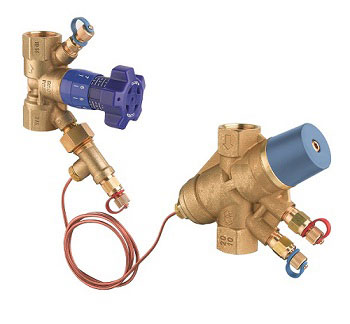The building and construction industry has always been a barometer for the UK’s economic climate, and is once again at the coalface of economic and political ebbs and flows.
All over the UK, businesses are stalling investment, many adopting a ‘wait and see’ strategy to development– over the last 12 months Britain’s builders have witnessed big commercial infrastructure projects come to an end – but without being replaced by new projects as such the industry is rallying to survive the current wave of uncertainty.
Yorkshire-based Albion Valves (UK) Ltd, supplies valves and fittings for the building services and process industries and is keen to support the industry weather this latest economic storm.
Albion’s Sales Director, Les Littlewood, believes the best way to support a stalling construction industry, lacking the confidence to embark on new builds is to look at ways to strengthen existing infrastructure and fortify what is already in place through refurbishment and retrofit.
Les commented:
“Many companies are holding back on investment until the economic situation stabilizes, but in the meantime much of Britain’s commercial and residential property is decades old and in need of updating. At Albion we believe that one solution to helping ensure that businesses are in order while not breaking the bank, is to retrofit.”
A retrofit, carried out in conjunction with taking preventative measures with older building systems, can ultimately mean less investment, less operational downtime and less ongoing maintenance issues. Albion believes that facilities managers can preempt potential issues with ageing HVAC systems by timely retrofitting, and stocks a comprehensive range of valve models and components commonly specified in older buildings.
In addition, Albion’s specialist sales team can also help evaluate the system in question to identify potential technical issues that may arise affecting comfort, air quality and water flow issues in any building and recommend the best engineered solutions and products for the job giving cost-effective solutions.
For example, to upgrade a water system in a commercial building, it is not always necessary to tear out all the building infrastructure and pipework. It is entirely feasible for a modern, efficient system to be created using existing materials with a few strategic tweaks. This will result in saving money on energy for a fraction of the cost of a new installation, as well as achieving a short payback period via the savings.
On a hot water system, engineers could consider updating to 2port PICV hydronic balance control, meaning only the water required is delivered to a specific location with no wasted energy. Hence, the 4 port constant volume system could be upgraded quite easily and cost-effectively at each terminal unit to a variable volume system, offering significant savings – even on older installations.
Similarly, if the pipework is in good condition on an older HVAC system, then the terminal units such as FCU’s, over door heaters and internal water coils are likely to be in equally good order. However, to boost efficiency and comfort performance, the controls may benefit from improving speed control on the fan – to optimise air flow over the coil which can add years to the system’s service life, without significant disturbance to the business or need for down time.
Additionally, another simple measure to be considered to help avoid problems in the longer term is that heating systems could have TRVs fitted on radiators. This would mean that the circuit closes down at optimum temperature, therefore preventing overheating and wasteful energy in terms of boiler gas consumption and circulatory pumping costs.
Building Management Services specifying technical products for retrofits, should also consider installing on-off control valves on HVAC systems to help prevent unnecessary heating or cooling of any unoccupied rooms or zones within the building.
For commercial buildings such as schools, office blocks and retail outlets, water leaks and overzealous heating or cooling systems waste energy and hemorrhage money. Wastage from leakage and unnecessary heating or cooling can be simply solved by the use of solenoid valve installations. Solenoids are an invaluable and inexpensive preventative measure that can be easily fitted to increase the efficiency credentials of older systems, by preventing dripping taps, non-closures and leaks to save water.
In older or dirty systems that often occur in public buildings, simple and regular housekeeping is often the answer and prevention is always better than cure, engineers should check the system has included strainers and non-return valves and ensure that these are fitted correctly and that the mesh is clean.
Non-return valves are generally, small, simple, inexpensive and work automatically. They are designed to prevent a backflow of product into a system promoting optimum levels of cleanliness and helping to ensure the smooth running of the system and greater longevity.
Time and resource wastage can be avoided by thoughtful specification of equipment from the outset. Quite simply, manual valves that require a lot of attention should be replaced with modern automated valves – manual interaction invariably means poor control.
Additionally, failures such as pumps overheating and seizing may be due to lack of by-pass allowance within existing systems, checking that these are both installed and set-up appropriately may resolve repeat failures which are a costly symptom rather than a cause of system malfunction.
Older buildings with ageing systems always come up against compliance issues. New regulations, directives and adhering to compliance policies to ensure equipment is fit for purpose can cause one of the greatest problems for engineers.
So where compliance is a minefield, Albion has delivered a quick fix to help take the issue away from specifiers and has prioritised approvals and accreditations across their product portfolio ensuring that the products they specify are fit for purpose and fall within new legislation.
As with anything the devil is in the detail, but while the opportunity is there, a quick fix or retrofit could be the ideal solution to keep the cogs of industry turning without breaking the bank.
